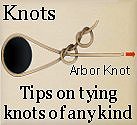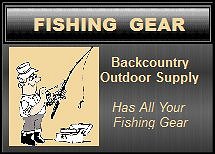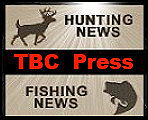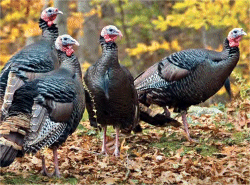The country's premier hunting and fishing daily news
The Backcountry Press
BACKCOUNTRY PRESS is the country's premier daily hunting, fishing & outdoor news in the USA, Canada and more. Read whats happening in your neck of the woods & beyond.
For those who provide updated information in the field of hunting & fishing, please don't hesitate to contact us to get your articles added to our site.
The Backcountry Outdoor News reports the latest hunting & fishing news along with fishing derbies & tournaments
from:
| ||||||
| ||||||
|
© 2010 Backcountry Press Outdoor News - All Rights Reserved
Disclaimer: The views expressed on this site are that of the authors and not necessarily that of The Backcountry Press Outdoor News
Connect With Us
Loading
Hunter Safety -- Turkey Hunting Safety Tips
Submitted by: Backcountry Press Outdoor News
Successful hunting trips require a combination of skill, patience and most importantly, preparation. Hunters should brush up on important turkey hunting safety tips before hitting the woods.
“Hunters should be 110 percent certain of their target AND what is in front of and beyond it before pulling the trigger and should never shoot at sound or movement.
Turkey hunters have to utilize their firearms safety knowledge and remember ways to keep themselves and others safe while in the woods.
- Never wear red, white, blue or black clothing while turkey hunting. Red is the color most hunters look for when distinguishing a gobbler’s head from a hen’s blue-colored head, but at times it may appear white or blue. Male turkey feathers covering most of the body are black in appearance. Camouflage should be used to cover everything, including the hunter’s face, hands and firearm.
- Statistics show that 80 percent of accidents during turkey hunting seasons involve hunters mistaking other hunters for game or hunters failing to positively identify their target.
- Planning your turkey hunt is critical when two or more hunters are jointly hunting the same area – and then agree to separate if the birds are not spotted. Have a clear understanding and agreement on the areas each hunter will hunt, and then stick to that plan.
- Select a calling position that provides at least a shoulder-width background, such as the base of a tree. Be sure that at least a 180-degree range is visible.
- Do not stalk a gobbling turkey. Due to their keen eyesight and hearing, the chances of getting close are slim to none.
- When using a turkey call, the sound and motion may attract the interest of other hunters. Do not move, wave or make turkey-like sounds to alert another hunter to your presence. Instead, identify yourself in a loud voice.
- Be careful when carrying a harvested turkey from the woods. Do not allow the wings to hang loosely or the head to be displayed in such a way that another hunter may think it is a live bird. If possible, conceal the turkey in a blaze orange garment or other material.
- Although it’s not required in some states, it is suggested that hunters wear blaze orange when moving between a vehicle and a hunting site. When moving between hunting sites, hunters should wear blaze orange on their upper bodies to facilitate their identification by other hunters.
For more information on turkey hunting visit: National Wild Turkey Federation














